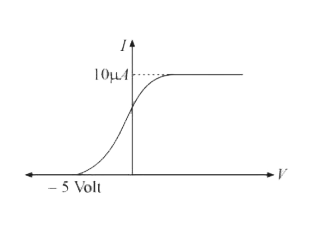In the emission of photo-electrons, the number of photo-electrons emitted per unit time depends upon the
Energy of incident radiations
Frequency of incident radiations
Intensity of incident radiations
None of the above
The correct Answer is:C
To determine the factors that influence the number of photoelectrons emitted per unit time during the photoelectric effect, we can follow these steps:
1. Understanding the Photoelectric Effect:
- The photoelectric effect occurs when light (photons) strikes a metal surface and causes the emission of electrons. The energy of the incoming photons must be sufficient to overcome the work function of the metal for electrons to be emitted.
2. Role of Photon Energy:
- Each photon has a specific energy given by the equation E=hν, where h is Planck's constant and ν is the frequency of the light.
- If the energy of the photons is increased (by increasing the frequency), it can excite electrons, but each photon can only emit one electron. Therefore, increasing the energy of individual photons does not increase the number of emitted electrons per unit time.
3. Role of Intensity of Light:
- The intensity of light is related to the number of photons striking the surface per unit time. Higher intensity means more photons are available to interact with the electrons in the metal.
- If the intensity of the incident light increases, the number of photons hitting the metal surface increases. This results in a higher probability of electrons being emitted because more photons can interact with more electrons.
4. Conclusion:
- The number of photoelectrons emitted per unit time depends primarily on the intensity of the incident light. Therefore, the correct answer is that it depends on the intensity of the radiation.
Final Answer:
The number of photoelectrons emitted per unit time depends upon the intensity of the incident radiation.
- The photoelectric effect occurs when light (photons) strikes a metal surface and causes the emission of electrons. The energy of the incoming photons must be sufficient to overcome the work function of the metal for electrons to be emitted.
- Each photon has a specific energy given by the equation E=hν, where h is Planck's constant and ν is the frequency of the light.
- If the energy of the photons is increased (by increasing the frequency), it can excite electrons, but each photon can only emit one electron. Therefore, increasing the energy of individual photons does not increase the number of emitted electrons per unit time.
- The intensity of light is related to the number of photons striking the surface per unit time. Higher intensity means more photons are available to interact with the electrons in the metal.
- If the intensity of the incident light increases, the number of photons hitting the metal surface increases. This results in a higher probability of electrons being emitted because more photons can interact with more electrons.
- The number of photoelectrons emitted per unit time depends primarily on the intensity of the incident light. Therefore, the correct answer is that it depends on the intensity of the radiation.
The number of photoelectrons emitted per unit time depends upon the intensity of the incident radiation.
Similar Questions
Light of wavelength 5000 Å and intensity of 3.96×10−3wa/cm2 is incident on the surface of photo metal . If 1% of the incident photons only emit photo electrons , then the number of electrons emitted per unit area per second from the surface will be
View SolutionThe kinetic energy of the photo electrons does not depends upon
View SolutionIn a photoelectric effect , the K.E. of electrons emitted from the metal surface depends upon
View SolutionIn photoelectric emission, the energy of the emitted electron is
View SolutionAssertion (A) : On increasing the frequency of light larger number of photoelectrons are emitted .
Reason (R) : The number of electrons emitted depends on the intensity of incident light.
View SolutionA : The process of photoelecton emission and thermionic emission of electrons is different .
R : Photoelectric emission does not depend upon tempereature , whereas thermionic emission is temperature depandent .
View SolutionA : On increasing the intensity of light , the number of photoelectrons emitted is more . Also the kinetic energy of each photo increases but the photoelectric current is constant
R : Photoelectric current is independent of intensity but increases with increasing frequency incident radiation
View SolutionStopping potential for photo electrons
View SolutionIn the photoelectric experiment, if we use a monochromatic light, theI–V curve is as shown. If work function of the metal is 2 eV, estimate the power of light used. (Assume efficiency of photo emission =10−3, i.e. number of photoelectrons emitted are 10−3 times of number of photons incident on metal).

View SolutionIn the photoelectric experiment, if we use a monochromatic light, theI–V curve is as shown. If work function of the metal is 2 eV, estimate the power of light used. (Assume efficiency of photo emission =10−3, i.e. number of photoelectrons emitted are 10−3 times of number of photons incident on metal).

View Solution
